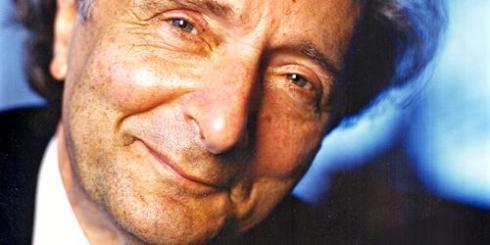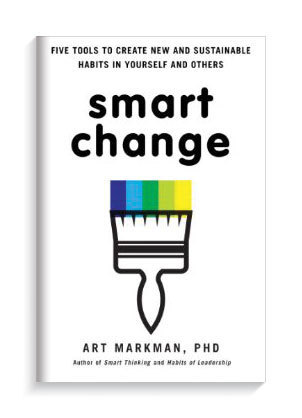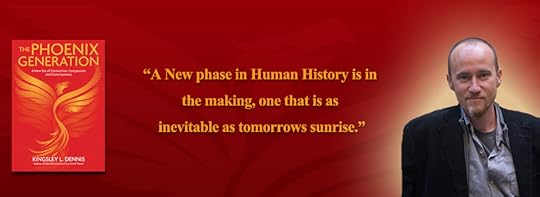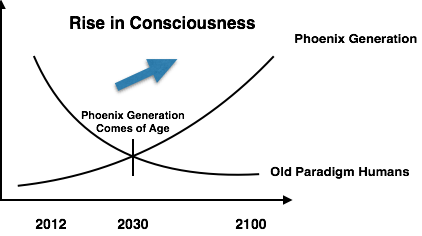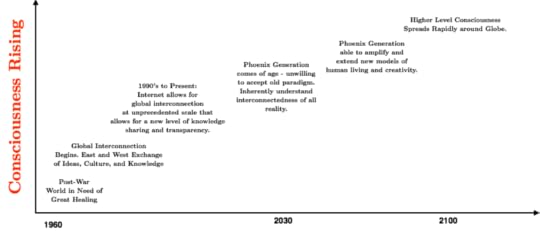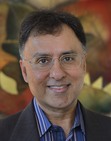Jay Kshatri's Blog, page 11
April 9, 2015
Neuroscientist Dr. Olie Johansson exposes dangers of Electromagnetic Fields – VIDEO
Neuroscientist exposes dangers of Electromagnetic Fields. Video presentation by Dr. Olie Johansson – Associate Professor in the Neuroscience department of the world-renowned Karolinska Institute in Stockholm, Sweden. The presentation takes place at a technical seminar for physicians on the Environment and Health in Barcelona, Spain.
If you have come to accept that we are energy beings, then you can probably understand that being bombarded by EM fields from all our various technology devices, including WiFi and Cellular services, could have dangers for our health. Dr. Johansson demonstrates that all people are hypersensitive to EMFs. The health effects are long term – including DNA fragmentation – as well as being linked to a growing number of allergies and even tinnitus.
*If you want to take some steps to reduce your exposure, see http://www.earthcalm.com – I purchased a couple of their EMF protection products for our home a couple of years ago. The site has links to further research in this area as well as the European organization that certifies the effectiveness of EMF reduction devices.
-Jay Kshatri
www.ThinkSmarterWorld.com
The post Neuroscientist Dr. Olie Johansson exposes dangers of Electromagnetic Fields – VIDEO appeared first on Think Smarter World.
How Information Overload Sabotages Our Observation Skills – VIDEO
Bob Hambly, Creative Director, Hambly & Woolley design firm in Toronto: examines the topic of observation in this video presentation – how we’ve become visually complacent, how we are manipulated to see certain things, how important it is to have good observational skills, and how we can go about improving them. This is something we can all get better at. And the better we get at observing, the better we will get at generating creative ideas.
“Roughly 25 years ago, it took five full workdays to view the amount of information we now observe in 24 hours. Due to this increase of information, our minds have become very proficient at tuning out to prevent an information overload – making us lazy observers.”
An excellent and engaging presentation. The remedy for increasing our observational skills is of course meditation and mindfulness – see my posts – Mindfulness – Experiencing Reality in HD – and Effortless Meditation – on how to get started.
-Jay Kshatri
www.ThinkSmarterWorld.com
The post How Information Overload Sabotages Our Observation Skills – VIDEO appeared first on Think Smarter World.
Historian Theodore Zeldin on how Conversation Can Change Our Lives
Conversation: How Talk Can Change Our Lives is a beautiful little book by British historian Theodore Zeldin. In an age of the zombie smartphone addict, the art of conversation seems like such an anachronism. Fortunately, Theodore Zeldin in his book, Conversation, aims to remind us of what we’ve forgotten – that the art of conversation is quintessentially human and should be developed and cherished:
“The peculiarity of humans is that they can watch themselves as they go about their business, as they talk and think. They have, as it were, two internal voices, so they can both create new ideas and look at them, criticize or admire. They can be either slaves of their thoughts and memories, or decide which of them are useful, which cause only trouble, and which to put away in a bottom drawer. Conversation with yourself is full of risk, because you have to decide how much to enhance your ideas with imagination. The really deprived are those who say they have no imagination, or no sense of humor, which is almost the same thing. Dostoyevsky claimed that it doesn’t matter what people say, only how they laugh. It’s true that you cannot be free or fully human until you laugh, because to laugh means to make your own judgment, to refuse to accept things at their face value, but also not to take yourself too seriously. That means inviting other people to your internal conversations and discovering that they see you quite differently from the way you see yourself.”
Zeldin reminds us that it is those meaningful conversations sprinkled throughout our lives that reveal deeper levels of who we are and open up new directions on our path:
“But how can conversations make so much difference? They can’t if you believe that world is ruled by over-powering economic and political forces, that conflict is the essence of life, that humans are basically animals and that history is just a long struggle for survival and domination. If that’s true, you can’t change much. All you can do is have conversations which distract or amuse you. But I see the world differently, as made of individuals searching for a partner, for a lover, for a guru, for God. The most important, life-changing events are the meetings of these individuals. Some people get disappointed, give up searching and become cynics. But some keep on searching for new meetings.”
What we miss with our 24/7 tech culture is the dynamic flow of a conversation, the back and forth and give and take that lets ideas develop and established view points be tested:
“Our private conversations do make a difference too the world. A relationship may start chemically or romantically but conversation adds something infinitely precious to it. Having one’s ideas challenged and transmuted by verbal intercourse makes one aware of how much one owes to others, how much a partner can contribute to one’s intellectual, moral and emotional development, though one remains a separate, unique person. It is in private that one can best learn how to accept criticism. ”
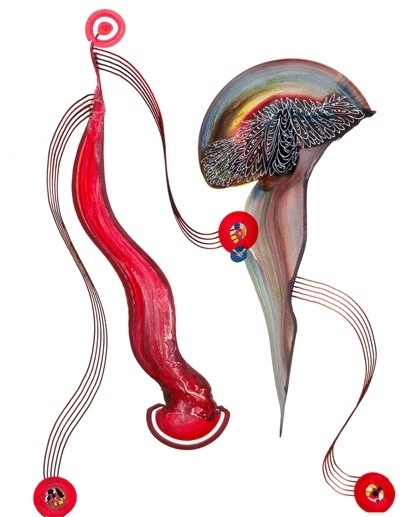
Zeldin: Conversation with a Stranger
Conversation between the same people can of course become stale, and so we need from time to time bring in new people into our lives to enliven the discussion. Often this happens when we travel, if we let it:
“But talking with people with whom we apparently have nothing in common seems to me to be worth pursuing even further. This is what travel confronts us with: meeting people living a completely different life, with different traditions of conversation. I believe that humanity is a family that has hardly met. One of the best ways it can meet is for our traditions of family hospitality to be revived; that is where conversations with strangers can fruitfully begin.”
Zeldin at his core is a lover of thinking and of the meeting of minds that happens in great conversations:
“I see thinking as bringing ideas together, as ideas flirting with each other, learning to dance and embrace. I appreciate that as a sensuous pleasure. Ideas are constantly swimming around in the brain, searching like sperms for the egg they can unite with to produce a new idea. The brain is full of lonely ideas, begging you to make sense of them, to recognize them as interesting. The lazy brain just files them away in old pigeonholes, like a bureaucrat who wants an easy life. The lively brain picks and chooses and creates works of art out of ideas.“
The book is full of rich and wonderful stories and observations of life that Zeldin has made in his travels. He also has included many beautiful pictures and illustrations (like the one above) that he created himself. Pick it up and go have a conversation with someone…
-Jay Kshatri
www.ThinkSmarterWorld.com
The post Historian Theodore Zeldin on how Conversation Can Change Our Lives appeared first on Think Smarter World.
April 8, 2015
Smart Change by Art Markman
Art Markman is Professor of Psychology at University of Texas at Austin and the Executive Editor of the Cognitive Science Journal. In his book Smart Change, Professor Markman addresses a major difficulty that all of us face – changing long established habits. In fact, some neuroscientists are stating that up to 95% of our daily behavior is of an automated variety that is generated by memories and learned behaviors stored in our subconscious. In other words, we are in many ways one big walking habit! Which points out how difficult it is to make transformational changes in our lives since much of what we do is deeply programmed within us. What Markman does so well in this book is to show that the solution to this dilemna is to learn to re-program the subconscious in order to break the habitual cycle and implant new, more desired behaviors. Here is a high level look at the book’s core points.
Ch. 1 – The problem of Behavior Change
Habits make behavior change hard. The brain is designed to spend as little time as possible thinking in order to conserve energy.
Smart Change approach:
Identify the goals you are systematically, failing to achieve, Then figure out what behaviors are causing the problems to determine what needs to be changed. Develop a structure to create new habits to replace the ones that were causing the problem.
Have to overcome not only brain’s desire to automate behaviors but also brain’s desire for near term pleasure versus long term gain.
Ch. 2 – Sustaining Behavior
You need to have goals in order to change behavior. The more energy, motivation, or arousal behind a goal, then more likely you are to change behaviors in order to achieve it. Otherwise, we would say the goal is dormant.
Environment helps reinforce behaviors that create habits. Changing your environment and doing things differently helps in changing habits. In a similar vein, create environmental cues and structures to make it easy for the brain to learn new desirable habits.
When you make a goal explicit, the brain actively searches for things in the environment in order to realize the goal. Be very intentional in your goal setting so that the brain can do its part.
Habitual response will become automated and happen without much effort from you. In order to change it, you have to become very mindful of what you are thinking, doing, feeling, etc. and then when you notice undesirable behaviors, take mindful action to stop it.
The brain sends cravings as a way to remind you that you have not satisfied a previously established habit or goal – hunger pangs as an example. Your stop system needs to step in to not give into the cravings. When you are stressed or tired, the stop system or will power works less effectively. So proper stress management is necessary to change behaviors.
Ch. 3 – Optimize your Goals
Clarify abstract goals and then identify the specific actions to take to achieve the goal.
Need to set both outcome goals and process goals. A process goal for weight loss would be go to gym on mondays and wednesdays and the outcome goal would be lose 10 pounds by June. Process goals help you keep the habit going into forming a long term change of behavior.
The brain does not like negative goals – trying to forcibly stop a behavior. Instead, it prefers positive goals – actions to perform rather than actions to avoid.
Set up milestones you need to achieve to hit your goal.
Think long and hard if you have the right goal. Sometimes we focus on the wrong thing for us.
For each goal, understand what are the actions, obstacles, and signs (that you have achieved it).
Focus more on process goals.
Ch. 4 – Taming the Go System
Use Implementation Intentions - visualize or brainstorm what you need to achieve. Then, you can start to unveil the actions and steps needed to take to achieve it.
What action am I going to take
When am I going to do it
Where will this take place
How often am I going to need to perform this action
What aspects of my life will I need to work around to reach my goal
Whose help do I need
What resources do I require
Focus on one change at a time until a habit is formed.
Goal Arousal – need to energize your goals in order to create the momentum to achieve them. Need to find ways to heighten the importance of the goal. Alternatively, you need to lower the arousal for habits you are trying to break. This requires focusing on process actions of that habit and also changing the environmental clues that support that habit. Conversely, to establish a habit, increase arousal, focus on good supporting process actions, and arrange your environment to support making the new desired behavior into a habit.
Ch. 5 – Harness the Stop System
Help the Stop system by creating space (time, distance, or social relationship) between the temptation and yourself.
Build scenarios to enact when faced with a temptation – what will you do in those situations, map it out. This way you will be better prepared to help the stop system do its work.
Overall, the stop system is a good short term tool, but the Go System creates better long lasting change.
Ch. 6 – Manage your Environment
The key is to create a consistent mapping between the environment and behavior and then to repeat the behavior in that environment.
It takes about 20 times of repeating a behavior in a certain environment for it to become a habit.
You want to set up your world so the things you want to do are easy and what you don’t want to do are hard.
Learn to identify the obstacles and temptations in your environment and learn to plan for them.
Ch. 7 – Engage with Others
People with similar goals help reinforce desired behaviors.
Ch. 8 – Making Change is essentially a summary and Chapter 9 is Helping Others Engage in Smart Change
Lead by Example
Suggest Goals
Give the right feedback – try to provide more guidance to create process changes rather than outcome goals.
Ask the person what things they are doing to achieve their goals, compliment on how they are doing things, ask what is their secret.
Positive feedback is good to get people committed to a goal. Negative feedback is good to prod people to accomplish even more (we still have more good work to do…).
Support Habit Development – look for ways to alter their environment to align with habit formation.
Take advantage of laziness. Make the good behaviors as easy as possible to do, while the bad ones make hard to do.
Make good behavior cheap and bad behavior expensive – through price of some type, or say making certain things harder to do.
Develop support networks – communities of people who can support each other in change and doing things differently.
Engage in conversations
-Jay Kshatri
www.ThinkSmarterWorld.com
The post Smart Change by Art Markman appeared first on Think Smarter World.
April 7, 2015
Amir Aczel and the Reuniting of Science and God
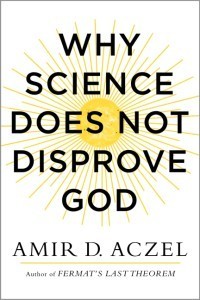
Amir Aczel holds a PhD in Mathematics from Berkeley, is a science writer for Scientific American, Discover Magazine, Wall Street Journal, and New York Times, and is currently a research fellow at Harvard University. The book does a terrific job of chronicling the history and intersection of religious thought and scientific discovery. Prior to the 16th and 17th centuries, most European scientists were in fact working to uncover the scientific basis for “what God had created”.
But as knowledge grew, they came into direct conflict with the command and control structure of the Catholic Church – that’s where things went wrong: Galileo Galilei (1564-1642) – was religious. His daughter was a nun and he had many friends in religious circles (including the pope). He was known as the father of astronomy and modern science. In 1600 Galileo using his telescope verified the theory of Copernicus – that the earth circled the sun. The church was furious, and thus began the fight between science and religion.
Galileo was forced to appear in front of the Catholic Inquisition in Rome who ordered he be put to death (and had already killed many other scientists and thinkers for going against church orthodoxy). In 1633 in trial, Galileo recanted his findings under threat of torture and was put under house arrest for the remainder of his life. Galileo also is famous for linking science and mathematics and said “the book of nature is written in the language of mathematics”. After this, of course, over the next 400 years Science and Religion has grown apart.
It’s a pity because as Einstein said: “Science without religion is lame, religion without science is blind”. Could the new Pope bring Science and Spirituality back together again? An example would be if the Pope were to say that the church will be open to accepting anything that Science can prove or disprove in terms of scripture (the Dalai Lama by the way has already made this statement in relation to Buddhism). The Pope has already shown he’s capable of amazing things. Maybe it will happen…
The book is a very interesting read that covers the major scientific discoveries through current day. Aczel’s intention is exactly as the title states, not to prove the existence of God, but to prove that Science does not Disprove God and to firmly take on the Dawkins lead New Atheist movement. Below are some highlights from the book:
Science in Relation to Religion Over the Last 2,000 years – Brief Tidbits
Greeks had advanced ideas about the natural world and science. However, once the dark and middle ages arrived, the church took on a moral and spiritual role in human life and all free thought was discouraged. As an example, the view on the sun being at the center of the universe was not allowed to be championed though a number of scientists tried. Not until Nicolaus Copernicus, polish mathematician and astronomer, in 1500 was the correct model arrived at. Until then, a model by Claudius Ptolemy, mathematician and astronomer) in 100 AD (living in the twighlight of the Greek empire) which in a very complex way showed that the earth was at the center. Copernicus can then be thought of as the beginning of modern science.
Galileo Galilei (1564-1642) – religious. His daughter was a nun and he had many friends in religious circles (including the pope). Known as the father of astronomy and modern science. In 1600 Galileo using his telescope verified the theory of Copernicus – that the earth circled the sun. The church was furious, and thus began the fight between science and religion. Galileo was forced to appear in front of the Catholic Inquisition in Rome who ordered he be put to death (and had already killed many other scientists and thinkers for going against church orthodoxy). In 1633 in trial, Galileo recanted his findings under threat of torture and was put under house arrest for the remainder of his life. Galileo also is famous for linking science and mathematics and said “the book of nature is written in the language of mathematics”.
German scientist and mathematician Johannes Keppler invented the mathematics of planetary motion – still used till today. Keppler like other scientists at the time mixed science, spirituality, and the occult . Leibniz and Newton followed his work by inventing Calculus.
Rene Descarte born in 1596 mixed science, philosophy, and religion as well . Blaise Pascal was a friend of Descarte and who contributed greatly to physics and math, was deeply religious.
Gottfried Wilhelm Leibniz (1646-1716) – philospher, statesman, mathematician. A religious protestant who was influenced by his association with Catholic princes. Leibniz was attracted to the idea of reconciling the religions of Europe as a way of unifying all the people of the continent. In 1668, Leibniz wrote a treatise arguing for the existence of god and the immortality of the should. Titled, “nature’s testimony against the atheists”.
Isaac Newton (1642-1727) was born on christmas day of the year galileo died. Newton was deeply religious and spent two years alone in Woolsthorpe meditating on the universe and its laws and then invented the calculus. Newton saw no conflict between pursuing groundbreaking science and and contemplating the most difficult religious ideas. His worrk gave us extreme insight into how the universe works – mechanics, optics, astronomy, and mathematics. His understanding of gravity was fundamental to our modern day control of technology.
1851- self educated french physicist Leon Foucault proved that the Earth is rotating. Dealing another blow to church orthodoxy.
1859 – Charles Darwin publishes On the Origin of Species. The discoveries of fossils, evolution, geological time, the rotation of the earth, and other developments in science showed that scripture should not be taken literally.
1905 – Modern Theoretical Physics begins with Einstein’s special theory of relativity. showing that time is not constant and that both time and space bend , contract or expand, to accommodate the universal constant – the speed of light. He also showed in 1905 that e=mc^2 and that energy and matter are the same thing.
1929 – Hubble shows that the universe is expanding (contrary to what einstein believed). Belgian Catholic Priest Georges Lemaitre works out the mathematics to show that if the universe is expanding, then there must have been an initial point – The Big Bang.
Einstein was religious at times during his life. He attended synagogue services in Prague in 1913 – during the period of his highest scientific productivity. It appears he did believe in a kind of god; the entity that created the laws of nature, which einstein viewed as his life’s role to uncover. Einstein spoke in terms of god all the time, famously saying “subtle is the lord, but malicious he is not” and “I want to know god’s thought – the rest are details”. He once replied in a letter to a little girl asking him his thoughts of god – “…everyone who is seriously involved in the pursuit of science becomes convinced that some spirit is manifest in the laws of the universe, one that is vastly superior to that of man. In this way, the pursuit of science leads to a religious feeling of a special sort, which is surely quite different from the religiosity of someone more naive.” Einstein once said “science without religion is lame, religion without science is blind”. It is said einstein didn’t believe in a personal god (one who observes the actions of all people and actively intervenes in their lives), as of the bible, but more a mystical god fully in charge of natural laws.
1920’s – Quantum Theory – Erwin Schrodinger, Werner Heisenberg, Paul Dirac, Wolfgang Pauli, Neils Bohr, and Max Born. “Quantum physics tells us that no matter how thorough our observation of the present, the (unobserved) past, like the future, is indefinite and exists only as a spectrum of possibilities. The universe according to quantum physics, has no single past, or history.”
1960 – String Theory – italian physicist Gabriele Venziano – while working at the Weizmann Institute in Israel. the basic elements of nature are tiny vibrating strings. In string theory, the universe is seen to inhabit a space that has more than the usual four dimensions of space and time because the equations that govern the behavior of these stings make sense, mathematically, only in a larger context of ten or eleven dimensions. Some scientists have taken this theoretical requirement of string theory to mean that the actual physical universe in which we live must have an extra six or seven latent dimensions. String theorists such as greene call these “curled up dimensions” viewing them as hidden within the three dimensions of space and one of time that we are aware of.
If you’ve seen the recent movie Interstellar, then you’ve seen the dramatization of some of the tenets of String Theory in action. Here’s a quick 4 minute video explanation on String Theory by Theoretical physicist Michio Kaku.
Much more to come…
-Jay Kshatri
www.ThinkSmarterWorld.com
The post Amir Aczel and the Reuniting of Science and God appeared first on Think Smarter World.
Do this one thing to accelerate your thinking – VIDEO
The post Do this one thing to accelerate your thinking – VIDEO appeared first on Think Smarter World.
The Collective Evolution III: The Shift – VIDEO
The post The Collective Evolution III: The Shift – VIDEO appeared first on Think Smarter World.
Eckhart Tolle – Living with Meaning, Purpose, and Wisdom in the Digital Age – VIDEO
The post Eckhart Tolle – Living with Meaning, Purpose, and Wisdom in the Digital Age – VIDEO appeared first on Think Smarter World.
Eckhart Tolle – Living with Meaning, Purpose, and Wisdom in the Digital Age
The post Eckhart Tolle – Living with Meaning, Purpose, and Wisdom in the Digital Age appeared first on Think Smarter World.
April 4, 2015
Kingsley Dennis and the Phoenix Generation
The sociologist and futurist, Kingsley Dennis, is a man that will make you feel better about the future. In his recent book, The Phoenix Generation, he lays out how over the next 15-20 years it will be the current crop of children being born on the planet that will take us out of the current lower levels of consciousness that have stagnated human attempts to achieve higher levels of cooperation, collaboration, and co-creation.
Mr. Dennis explains that this new group will be carrying a lot less ideological baggage than their elders because they instantly have access to technology and information that their predecessors did not. As a result:
…they will be arriving with minds that see things differently than we currently do. That is, their thinking patterns will not automatically accept many of our beliefs, ideologies, or our socio-cultural systems. Especially, they will finds themselves at odds with our orthodox systems of education and health, for example. In terms of education, they will require – or rather, demand – a tech-assisted educational platform the likes of which we have never seen before – because we have not created it yet. Learning modules will become more individually customized. Students will have more influence in directing their learning process in according to their needs, wishes, and motivations. The old model curriculum of preparing students for an industrial workforce will no longer apply. [If you want to see what this might look like in more detail see Seth Godin’s excellent manifesto on reimagining the k-12 educational system here.] In the health area, there will be increased confidence and support of what are now considered “alternative” health practices. This will emerge as our sciences continue to validate the principles and properties of quantum energy fields. The concept of energy exchange, and vibrational medicine, in healing will become more commonplace, and sought after. This includes the use of human consciousness in non-local healing.
I don’t think Kingsley means to imply that technology is a panacea, rather, that technology gives us access to the best information and insight located anywhere on the globe and in so doing, tampers down the build up of personal, historical, and cultural biases, misinformation, and half-truths.
This new access to truth that the upcoming generation will grow up with will herald in a new rise of consciousness across the planet. Mr. Kingsley sees it manifesting itself in the following ways in the current generation of children who will behave differently than their elders:
Young minds will have had enough of a fear mongering, fear-sponsoring media. [Us adults can start now by adopting a new media diet – See 21 Ideas to Free your Mind from Mass Media ]
There will be a shift in media programming toward what elevates a person rather than what closes them down. The young minds and hearts of the Phoenix Generation will increasingly reject negative news and influences, and naturally shift away from such energies.
Those of the Phoenix Generation will themselves be content producers – producing, creating, and distributing their own inspired content-driven media. They will also become their own journalists.
The Phoenix Generation will instinctively know that the most destructive decision that an individual can make is to give away their own authority and decision making power. This new era will herald the rise of participatory politics. The survival of politics as we know it will will depend on the ability of personages and processes to re-calibrate and be in alignment with the increasing numbers of awakening individuals.
People will seek out those experiences and impacts that are positive, and which bring harmony to life rather than disorder. Desirable lifestyle traits sought within these years will include reconciliation, harmony, coherence, non-judgement, forgiveness, conscious communication, love, understanding, transparency, honesty, integrity, and of course humor.
There will be a greater appreciation of the role and place of meditation within people’s lives.
Dennis sees global technological integration leading to human interconnectedness at a grand scale which will lead to a rise in collective human consciousness and creativity:
Simultaneous and instant communication across space and time will nurture within the Phoenix Generation a sense of living within a planetary society. They will feel in constant contact with like-minded people across the world. This physical connectivity will help to stimulate and catalyze collective empathy as people will feel an innate sense of being energetically connected to others. The instinctual intelligence within the younger generations especially will be shared around the world almost instantly. This fostering of collaboration will lead to an acceleration of inventions and new discoveries.
In terms of timescales, Kingsley’s model would predict the current generation of children being born in the last few years to reach early adulthood sometime in the range of 2030. At that point as they start entering the workforce and adult life, they will start to alter the existing economic and political systems that are badly in need of an upgrade of consciousness.
There has been a lot of work that has lead up to this moment in history and much remains to be done to allow the Phoenix Generation to do the work of rebuilding the planet. I believe if we go back to the 1960’s we start to see the first breaks in existing thought paradigms starting to appear. This was aided by a new global exchange of ideas and people between East and West as more of us could travel, correspond, and share information more easily.
From the 1990’s till today, the rise of the internet has allowed for a global knowledge interconnectivity to emerge that is giving way to a rapid rise in collaboration and learning. The Phoenix Generation walks directly into this new world of interconnectedness enabled by new levels of technology and human connectedness. They will then extend this model to full human interconnectedness (and with the resultant rise in consciousness, more effectively manage future technology progress so that it is in service of humanity and not the other way around).
Of course, a lot of work remains to be done by their elders (us) in helping to create systems and structures to allow the Phoenix Generation to properly launch their world changing initiatives. Between 2015 and 2100 we will witness a major upheaval in established structures – economic, political, educational, health, cultural, religious, and more. As this occurs, new models for each of these structures will need to built that support a new human understanding of interconnectedness. Money and intellect will need to shift to these new pathways. And, fallout will need to be managed as people will have to be retrained, financially supported, and mentored on how to live in a new world reality. Nothing will happen smoothly as there will be plenty of resistance and noise from the status quo, but as they say, disorder and chaos are strong catalysts to change.
Much of the turmoil we are seeing around the world today is precisely a result of the information revolution that has occurred over the last fifty years. Truth is emerging and the people who benefit from it being kept hidden are fighting hard to maintain their power. But the truth genie cannot be put back in the bottle. Every year more and more of the true nature of reality is being revealed to more people. Progressive scientists will be a key component of this change effort. I am confident we will be able to experience major breakthroughs in scientific thinking in the next 30-50 years as higher levels of consciousness spread and allow existing scientific paradigms to shift into previously uncharted areas. Radical break throughs on the energy front for example will dramatically shift the world economic order that is built upon the access to and price of energy. Economic models that couldn’t be contemplated before will now be feasible. Established prices for goods and services will change substantially and lead to new ways of human living that are not yet possible.
The political and technology developments around the globe in the first 15 years of the 21st century have been breath taking. The 15 years leading to 2030, when the Phoenix Generation come of age, may be even more spectacular. Buckle your seatbelt. It won’t be an easy ride, but for those who are aligned with cooperation, collaboration, and co-creation, it will be a smoother journey and it will be an opportunity for great service to the birth of a new interconnected human reality. The children really are the future…
-Jay Kshatri
www.ThinkSmarterWorld
The post Kingsley Dennis and the Phoenix Generation appeared first on Think Smarter World.


